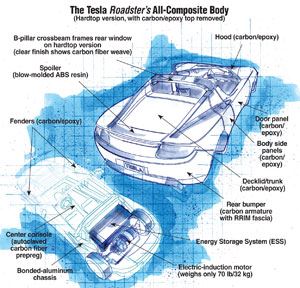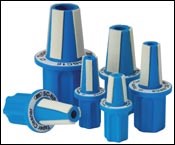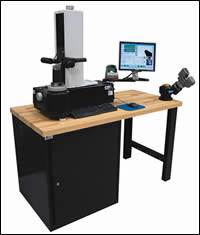Accessorize Your Machine to Maximize Performance and Efficiency
Machine tool accessories offer economical solutions to many of the production and timing issues that can negatively impact tool and machine setup.
When purchasing new equipment, it is typical to spend a great deal of time researching which machine offers the specifications and features to meet your needs. Buying a new piece of capital equipment is not only an investment in the machine itself, it’s an investment in the future and success of your company.
Protect Your Investment
Once a machine is purchased and leaves the controlled facility in which it was manufactured, the shop environment it enters influences the machine in completely different ways. Many factors such as ambient temperature, the type of material being cut, operator knowledge, shop cleanliness and air quality, make each setting unique. So once you’ve purchased a machine and installation is complete, how can you protect your investment and ensure machine longevity and maximize its performance?
There are a number of things you could be doing to keep your machine operating at peak efficiency. Schedule regular maintenance checks on your machine to maximize its performance and minimize unexpected downtime. Performing regular maintenance checks creates the opportunity to identify and fix minor problems, which could impact or slow down machine performance. This will keep all components of your machine functioning properly for a long time.
Examine the Process
Beyond machine maintenance and upkeep, it’s important to evaluate the entire manufacturing process and identify areas that may be slowing pro-duction. Because U.S. manufacturers are now competing on a global scale, we must identify ways beyond machine speeds and feeds and cycle times that can help boost our productivity and maximize parts per cycle. Parts-per-cycle time is the critical factor that will drive a company’s bottom line, and ultimately, its success or failure.
It is important to determine which steps in the manufacturing process are impacting cycle time. Very often, manual operations create the biggest bottlenecks during production. And, while many of our processes require operator interaction, it is critical to strike a balance by finding ways to minimize these manual operations associated with tool and machine setup.
Accessorize Your Machine
Machine tool accessories offer economical solutions to many of the production and timing issues that can negatively impact tool and machine setup. When used in combination with a machine that delivers the speed and features you need, accessories can help you achieve maximum levels of productivity.
Consult with a manufacturing partner that specializes in tooling to determine which accessories can improve your productivity. There are many accessories that have been developed specifically to reduce manual operations and minimize tool and machine setup time.
Tool Assembly Devices
Bench-top or toolcart-mounted tool assembly devices are designed for difficult-to-grip tool shank surfaces. Shops that use vice grips for tool assembly and disassembly run a high risk of damaging the tooling and shank surface finish. Vice grips have serrations on the gripping surfaces, which can easily transfer and scar toolholder shanks and surfaces. When holders are designed to rotate between 30-40,000 rpm, it is critical that their original surfaces are preserved.
In addition to protecting tool quality, these devices provide safer and faster tool assemblies. Look for tool assembly devices that allow convenient access for all tooling maintenance operations in one setup, greatly minimizing tool setup time associated with the assembly and disassembly of tapered V-flange tooling, short taper tooling like HSK and Capto, and also modular tooling systems.
Chip Fans
Chip fans create in-process cleaning without stopping production. They are designed to mount securely in either a collet chuck or end mill holder and become part of the machining cycle. Chip fans can be programmed into the machining cycle to minimize spindle downtime and maximize operator efficiency. This decreases the accumulation of non-productive machine time in a cell as multiple machine cycles end at the same time.
Chip fans come with a pre-drilled hole, which allows coolant-through spindles to shoot coolant through the center of the fan to rinse tables, fixtures and workpieces. Next, the fan begins rotation to remove the chips and coolant, thus providing two cleaning operations in one. Chip fans offer a safe and economical alternative to cleaning surfaces off without operator interaction while the machine is closed. This keeps all chips and coolant inside the enclosure where it can be reprocessed by the machine.
T-Slot Covers
T-slot covers are protection plates designed to prevent chips and coolant from collecting inside t-slots of machining centers. When certain slots are not being used, these covers can be easily pushed in place to keep t-slots clear of debris. These aluminum inserts are simple to remove and deliver a clean machining surface to work from when changing setups.
Aside from keeping machine tables, fixtures and workpieces clean, it is critical to the precision and life of the machine tool spindle, cutting tool and toolholder that these components are cleaned regularly too.
Spindle Cleaners
To operate correctly, machine spindles must be kept clean. Spindle accuracy has a direct effect on the accuracy and rigidity of the machine tool. Any particles or contamination that gathers between the two mating surfaces will begin to grind and cause the surfaces to wear away, weakening the fit and severely impacting machine accuracy. Spindle cleaners help maintain spindle precision and prolong the life of the machine tools, cutting tools and toolholders.
Toolholder Taper and Bore Cleaners
Unlike spindles, which operate within the controlled environment of a machine, toolholders can be exposed to many pollutants inside a shop. During storage and between uses, toolholders run a high risk of picking up oils, dust and other particles that can contaminate their surfaces. Taper and bore cleaners come in many styles and sizes to match all types of tooling.
The most common taper cleaners are for HSK and V-flange shanks, and multiple bore cleaner designs exist for uses on shrink fit tooling bores, milling chuck bores and for the internal tapers of collet chucks. It is especially important to clean the intricate clamping geometries of your expensive tooling systems.
Gauge Bar
Measuring spindle accuracy is critical to achieving superior part quality during machining. To achieve top quality spindle performance, runout must be controlled. The cause of machine tool runout stems from wear of the spindle bearings or the ground spindle geometry deformed. Regular inspection with a precision gauge bar helps identify potential problems and can reduce downtime and costly repairs of the machine tool spindle.
A precision gauge bar is a perfectly concentric steel cylinder that measures the spindle rotation against its centerline, representing the only absolute part of the equation. It is designed to test runout and spindle accuracy. Lower runout yields increased output, longer tool life and most importantly, extended spindle life.
Articulated Indicator Stand
Certain industries require machining perfection. Articulated stands trace machining precision through multiple applications for the most demanding users. These stands typically have two or more pivot points to deliver positioning precision and an indicator tip for exact measurements in the μm range.
Look for an articulated indicator stand that has an easy-to-use design: three pivot points that are controlled in sequential order with one progressive clamping knob; a 360-degree freedom of positioning, making the instrument ideal for use in measurement, inspection and machining.
Summary
These accessories are relatively inexpensive when compared with their return on investment. Accessories help machine shops operate more efficiently by minimizing manual operations, maximizing efficiency and delivering superior part quality. Contact your tooling partner to learn more about these and other accessories that could reduce setup time and drive your bottom line.
Related Content
Tips for Tackling Mold Design, Machining, Cutting Tool and Wear Challenges
Tips for tasks ranging from reducing risk in part design and taking advantage of five-axis machining to refining cutting tool performance and reducing wear with guiding and centering systems.
Read MoreHow to Analyze and Optimize Cutting Conditions to Reduce Cycle Time
Plastic injection mold design and manufacturing company puts NC program optimization software module to the test. The results were surprising.
Read MoreThree Good Reasons to Switch from Three- to Five-Axis Machining in Moldmaking
Five-axis machining technology is a great tool in the moldmaker toolbox.
Read MoreRead Next
Toolroom Management: Presetting Increases Profits And Productivity
Guidelines for selecting the right tool presetting and measuring system to realize savings.
Read MoreAre You a Moldmaker Considering 3D Printing? Consider the 3D Printing Workshop at NPE2024
Presentations will cover 3D printing for mold tooling, material innovation, product development, bridge production and full-scale, high-volume additive manufacturing.
Read MoreReasons to Use Fiber Lasers for Mold Cleaning
Fiber lasers offer a simplicity, speed, control and portability, minimizing mold cleaning risks.
Read More























.jpg;maxWidth=970;quality=90)